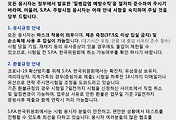The Feynman Technique
by Richard Feynman
이걸 한마디로 하면 내가 과거에 들었던것 한 문장으로 적을수 있을꺼 같다.
이해 될때까지 반복해서 읽고 이해했는지를 아무것도 없이 적고 그걸 누구한테 심플하게 가르칠수 있다면 완벽하게 이해한것이다.
목적 완벽하게 이해하기 결국 그게 제일 오래 기억하는 방법이다 인데
간단하게 설명하고자 하면 아래 정도의 문장으로 설명할수 있지 않을까 싶다.
Teaching is learning. 가르치는게 배우는것이다. 누군가에게 가르칠수 있다면 완벽하게 이해 한것이다.
해당 테크닉에 대해서 풀어서 써보면 여기 저기 찾아본결과 아래 4개 스텝임 ( 강화를 위해 5번째를 추가해봄 )
Step 1 . Study
공부할 주제를 적는다
주제에 대해 공부한것을 적는다. 스크립트를 만든다.
개념을 구체적으로 이해를 하게 된다.
Step 2. Teach
누군가에게 가르친다. 자신이나 가상의 사람에게 가르칠수 있지만
피드백이나 질문을 줄수 있는 진짜 사람에게 가르치는게 좋다.
Step 3. Fill the Gaps
2번을 통해 1번의 내가 공부한것들에 부족한점 피드백을 통해 알게된 문제점
가르치면서 명확하지 않거나 스스로 이해가 안되거나 뭔가 부족하거나 느낌이 안좋았던 부분에 대해서
다시 공부하고 글로 적어서 스크립트화 하고 개선한다.
Step 4. Simplify
이제 공부한것들과 가르치는 스크립트 들을 심플하게 다듬는다.
유치원생이나 초등학생들이 쉽게 이해 할수 있을정도로
심플 하게 설명 할수 있는 수준으로 간소화 심플화를 실시한다.
Step 5. Not looking, Just explain to someone without any paper and script. ( 더 추가해봄 )
아무것도 보지 않고 스크립트도 없이 그냥 스토리 텔링을 하듯이
다른 사람이 초등학생이나 유치원생에게 최대한 간단하게 이해 할수 있도록 설명한다.
그리고 이 모든것을 반복해서 다듬고 재 실시하여 체화한다.
ㅅ
https://blog.naver.com/kgg20909/222510729284

The Feynman Technique
The following article was first published in Custo
www.colorado.edu
The following article was first published in Customizing Life: Personal development - One day at a time.
Richard Feynman was a world renowned and widely successful theoretical physicist, even managing to win the Nobel Prize in 1965. He was a brilliant guy.
And Feynman developed his own personal method for deeply learning and internalizing topics. Now known as the Feynman technique, it’s a simple process, containing 4 repeatable steps:
Step 1 – Study
The first step is easy. In fact, anyone who’s reading an article about learning processes is probably already doing it.
All you have to do is choose a topic and start studying.
Naturally, this makes perfect sense for educational based study, but it can also work equally well for other skills such as sports. Simply write down all of the things you know about the skill on the piece of paper. Try and break it down into its core components and seek to understand it as a whole.
Example
As an example, we’re going to be using the game of chess.
With that in mind, applying step 1 to learning chess would be simple. You’d simply have to start learning the rules and basic strategies. Keep in mind that you’ll need to know enough that you can teach someone else in step 2.
Step 2 – Teach
Once you’ve completely covered the topic, it’s time for step 2. You’re going to teach it to someone else.
If you’d rather avoid actually teaching someone, you can just teach it to an imaginary audience. But the Feynman technique works much better if you use a real person. They’ll be able to give feedback and let you know when something isn’t clear.
Ideally, the person you’re teaching will ask questions and probe you, trying to find holes in your knowledge base. This might feel a little uncomfortable, but it’s exactly what you need in order to proceed to step 3.
Example:
Continuing with the chess example, step two would require you to teach someone else to play chess. You’d need to be able to explain the games’ objectives, rules, how the pieces move and some basic strategies to win.
As your student asks questions, you’ll inevitably discover holes in your knowledge – questions that you can’t answer. But this is exactly what you want.
Step 3 – Fill the Gaps
As I mentioned, step 2 will uncover some gaps in your knowledge.
Step 3 involves going back to studying, but with an intense focus on these gaps. The aim of step 3 is to remove these weaknesses and turn them into areas of strength.
Example:
What holes in your knowledge were uncovered in step 2? If you couldn’t quite remember how a piece moved, how a rule works or why a particular strategy is effective, then this is a weakness that needs to be focused on.
Now, you can go back and study exactly what you need to know. Recover the rules and search for information regarding the effectiveness of the strategy.
Step 4 – Simplify
Ideally, you’ve already greatly improved your understanding of the target skill. However, you’re not done. Now you need to simplify the content.
This step is extremely effective at building your cohesive understanding of a subject. To be able to cut away clutter and explain something so clearly that even young children with limited vocabulary can understand, is extremely difficult. Attempting to do this, forces you to not only deeply master the information/skill but to also grasp how all of the different elements join together.
“If you can’t explain it to a six-year-old, you don’t understand it yourself.”
– Albert Einstein
Example:
You now have a much better understanding of chess. But could you explain it in such a simple, clear way that others will certainly understand? Probably not. Chess is a complex game with many rules and strategies involved. To be able to explain this to a child who’s never played and have them understand, is a difficult task.
Break it down into its simplest form. Attempt to express this in a short, clear way. It’s easier said than done.
'영어' 카테고리의 다른 글
| [For Level 6]SPA 공식 홈페이지 (0) | 2022.01.25 |
|---|---|
| The Black SWAN by 나심 니콜라스 탈레브 (0) | 2022.01.12 |
| English Vocabulary (0) | 2022.01.11 |
| Minimal Pairs /r/ & /I/ (0) | 2022.01.11 |
| Grit : The Power of Passion and Perseveran (0) | 2022.01.08 |



